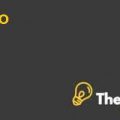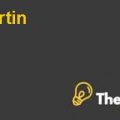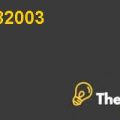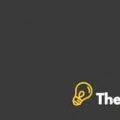Introduction
Inditex group is the owner of several retail clothes brands including Zara, pull and Bear, Massimo Dutti, Bershka, Stradivarius, Oysho, Zara Home, and Kiddy’s class. It was founded by the Spanish entrepreneur, Amancio Ortega, as Confecciones Goa, in 1963. Later on, his interest in the retail market influenced him to open the retail shops, and with this aim, he opened first Zara S.A retail shop.
It became the first retail and distribution company providing clothes at reasonable prices. Through 1980 to 2005, it increased its retail outsource shops, suppliers, and certified production centers in America, Africa, Europe, and Asia.
The expansion of company created many complications for Inditex to manage the company’s exploiting image in the outsourcing shops, suppliers, and the production centers in terms of labor, social, and economic concerns of employees.
Furthermore, the company struggled to strictly adhere to the values and principles of CSR strategies that had adopted recently to overcome the concerns over the company’s corporate social responsibility. Moreover, the media and NGOs focus on Zara could not be ignored by Inditex, which was the alarming situation for the company to take proper steps to deal with that threat.
On the other hand, SETEM an NGO organization had purchased group's shares in order to attend the General shareholders’ meeting and to question the group for its code of conduct, labor rights, purchasing practices, management transparent. Overall, in order to inquire the company’s stance on the corporate social responsibility. Later on in press release, the NGO clearly stated that “Inditex’s social responsibility plan is a deceitful front that had enabled the company to portray itself in the media as a pioneer in social responsibility issues in Spain”
Therefore, in order to meet the corporate social responsibility, the company had appointed Mr. Javier Chercoles, being an entrepreneur, had set his mission to reduce the image-damaging risks for Inditex. Furthermore, he was given the task to create the code of conduct for the organization that could meet future implications, and save the image of the organization.
The company has to measure the ways that it can engage in corporate social responsibility work that could improve the image of the company due to the allegations of the SETEM, which was an NGO.
Questions1. Why was it necessary to implement a program aimed at improving labor, hygienic, social and health conditions of outsourced shop workers?
Corporate Social Responsibility
Corporate social responsibility is an initiative taken by companies to benefit the society, in terms of the health, safety, awareness program, through sponsorship or directly taking it under the company’s social responsibility involvement.
Through the outsourcing business model, the company had successful operations, which provided greater flexibility, and lower manufactured unit cost. So in order to maintain business model, Inditex had to implement the social program to improve the labor, and social and health conditions to continuously benefit from the improving conditions.
NGO Accusations
SETEM had initiated Clean Clothes Campaign, a Spanish development NGO, which focused on Inditex in its corporate social responsibility. On the other hand, it also had purchased the company’s shares in order to attend the group’s general shareholders meeting, to question the company to state clearly as to what stances it has taken to improve the corporate social responsibility..............
This is just a sample partical work. Please place the order on the website to get your own originally done case solution.










